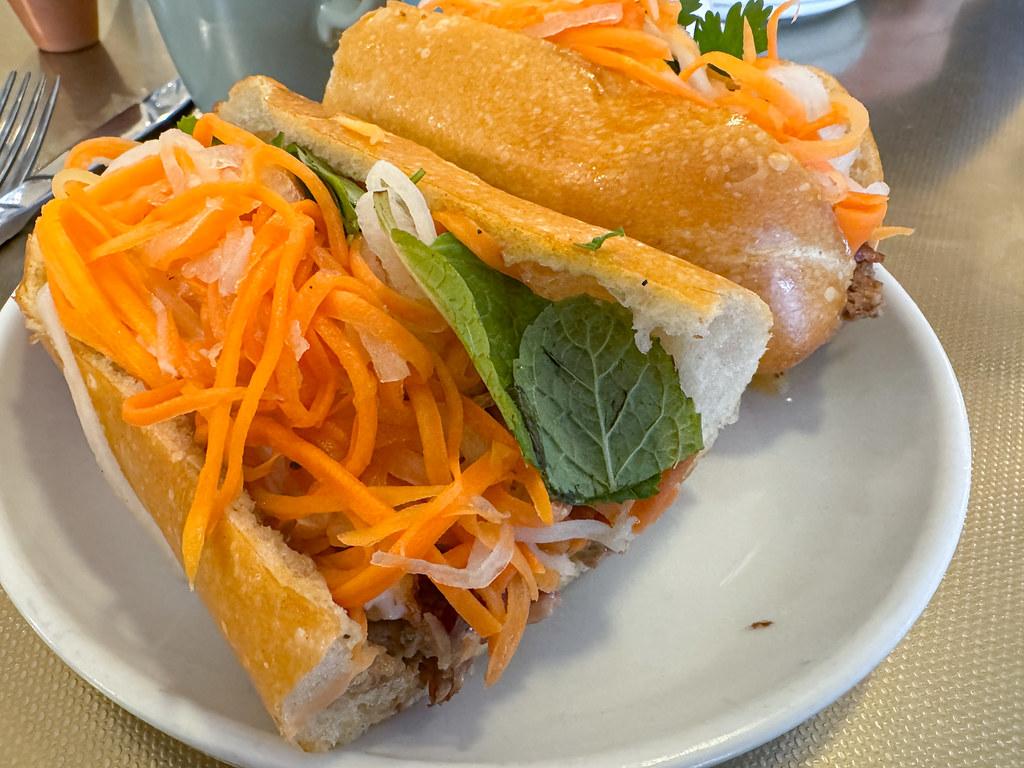Table of Contents
- Understanding Japanese Grocery Costs
- Eating Well on a Budget in Japan
- Savvy Shopping Tips for Japanese Markets
- Dining Out: Affordable Options in Japan
- Seasonal Foods to Save Money in Japan
- Q&A
- In Summary


Understanding Japanese Grocery Costs
Japan offers a vibrant mix of traditional and contemporary grocery items, and understanding the cost dynamics can significantly aid in managing your food expenses. While staple foods like rice and soy sauce generally remain affordable, imported goods may come with a hefty price tag due to transport and import tariffs. For instance, a kilogram of rice often costs around 200 yen, whereas imported cheese may soar to 700 yen for just 100 grams.
The type of store you visit also plays a crucial role. Local markets offer seasonal produce that’s both fresh and budget-friendly, while convenience stores, though quick and easy, typically have marked-up prices. Consider these shopping tips for better savings:
- Visit 100-yen shops for basic ingredients and snacks.
- Buy seasonal fruits and vegetables from local farmers’ markets.
- Purchase in bulk from supermarkets like Seiyu or Gyomu Super for long-term staples.
| Item | Average Price (Yen) | Store Type |
|---|---|---|
| Rice (1kg) | 200 | Supermarkets |
| Cheese (100g) | 700 | Imported Goods |
| Soy Sauce (1L) | 300 | All Stores |
The fluctuating cost of groceries in Japan might initially seem daunting, but with a strategic approach, maintaining a comfortable meal budget becomes achievable. Leveraging store memberships, utilizing discount days, and exploring online grocery deals are excellent strategies to maximize savings. Furthermore, comparison apps and websites can offer real-time insights into daily deals, helping you make well-informed purchasing decisions.


Eating Well on a Budget in Japan
Stretching your yen while indulging in the rich culinary culture of Japan is simpler than one might think. The key is to embrace local staples that offer nutrition as well as satisfaction. Convenience stores, known as konbini, are a surprising treasure trove where tasty meals don’t have to break the bank. Here, you can pick up breakfast staples like onigiri (rice balls), which are not only filling but available in a variety of flavors such as salmon, tuna, and pickled plum. Pair them with a cup of miso soup or a fresh salad, and you’ve got a balanced meal under ¥500.
You can also enjoy delicious meals by visiting 100-yen shops for affordable food finds. Beyond everyday essentials, these stores often stock ingredients like sauces and condiments in smaller sizes, perfect for creating meals at home without overspending. Try experimenting with Japanese curry, a crowd-favorite dish known for its warmth and hearty flavors, and incorporate seasonal vegetables from these budget-friendly outlets. Consider attending local markets where discounted fresh produce and seafood become flavorful dinners that won’t stretch your finances.
Dining out in Japan doesn’t always equate to steep bills. Many eateries offer teishoku options, which are set meals featuring rice, miso soup, a main dish, and pickles. This balanced diet is not only cost-effective but also ensures a full tummy. For those looking to taste different Japanese flavors, ramen shops or udon houses provide generous servings at affordable prices. To further manage your dining budget, look for lunchtime specials where reduced prices make it possible to savor authentic Japanese meals, without compromising on taste or experience.
| Meal Option | Approximate Cost (¥) |
|---|---|
| Onigiri + Miso Soup | 500 |
| Japanese Curry Ingredients | 1000 |
| Teishoku Set Meal | 800 |
| Ramen/Udon | 700 |


Savvy Shopping Tips for Japanese Markets
When navigating the vibrant aisles of Japanese markets, it’s essential to have a strategy to make the most out of your food budget. First, embrace the local products. Japanese fruits and vegetables, especially those that are in season, offer both superior freshness and value. Look for bargains in locally grown produce rather than imported goods, which tend to be pricier. Additionally, be on the lookout for “gyomu super,” or business supermarkets, which often provide bulk goods at significantly reduced prices. These stores can be goldmines for pantry staples like rice, soy sauce, and miso paste.
Exploring various markets and stores will reveal that prices can vary widely. Timing your visit can lead to further savings; many supermarkets discount fresh items in the evening to help clear out the stock. Consider these small shifts in your shopping habits to snag the best deals:
- Shop on weekdays instead of weekends.
- Seek out the “time sale” section for perishable goods discounts.
- Join store loyalty programs for additional discounts and offers.
For an organized shopping experience, consider using a simple comparison table to plan your purchases wisely:
| Item | Typical Price at Local Markets | Evening Discount Price |
|---|---|---|
| Fresh Fish | ¥500 | ¥350 |
| Noodles | ¥200 | ¥150 |
| Fruits | ¥400 | ¥300 |
By committing to some strategic shopping habits, you can enjoy the rich culinary culture of Japan without exceeding your budget. These tips will not only save money but also make your food shopping an exciting culinary exploration.


Dining Out: Affordable Options in Japan
When traveling on a budget in Japan, you need not miss out on its culinary delight. Japan offers a variety of dining options that won’t break the bank. Convenience stores like 7-Eleven, Family Mart, and Lawson are treasure troves for affordable meals. You’ll find everything from sushi rolls to bento boxes, with prices as low as ¥100 for some items. It’s a quick way to grab a meal while exploring the bustling streets of Tokyo or the serene landscapes of Kyoto. Don’t miss out on their famous onigiri – a tasty rice snack wrapped in seaweed.
- Ramen Shops: Local ramen shops are dotted across every city, providing delicious bowls of steaming noodles for around ¥500-¥1000. Popular chains like Ichiran and Ippudo offer an authentic taste without the hefty price tag.
- Izakayas: These Japanese-style pubs not only offer an enthralling atmosphere but also budget-friendly menu options. Dishes range from ¥300 to ¥700, perfect for sharing and tasting a variety of different flavors.
- Kaiten-zushi (Conveyor Belt Sushi): Experience sushi in a fun and affordable way. Plates typically cost between ¥100-¥300 each. It’s a great way to sample a range of sushi and Japanese cuisine.
| Category | Average Cost | Popular Locations |
|---|---|---|
| Bentos from Convenience Stores | ¥300-¥600 | Nationwide |
| Street Food | ¥100-¥500 | Asakusa, Dotonbori |
| Teishoku Set Meals | ¥800-¥1200 | Local Diners (Shokudo) |
Adventurous eaters should explore the neighborhoods around universities for student-friendly eateries such as cheap curry shops or casual donburi spots, where hearty rice bowls topped with tender meat or vegetables cost just a few hundred yen. Look out for “tachigui soba” joints, humble stand-and-slurp noodle shops often found near train stations, where a nourishing meal can cost as little as ¥300. By exploring these affordable dining options, you can savor the flavors of Japan without stretching your wallet.


Seasonal Foods to Save Money in Japan
Embracing seasonal produce in Japan not only enhances the quality of your meals but also significantly cuts down on grocery expenses. When fruits and vegetables are in peak season, they are abundantly available, leading to lower prices compared to off-season imports. For instance, spring brings a bounty of fresh strawberries and bamboo shoots, while the summer months are perfect for enjoying juicy peaches and succulent cucumbers. Take advantage of the autumn harvest by savoring persimmons and sweet potatoes, and in winter, indulge in citrus fruits like mandarins and hearty vegetables such as daikon radishes.
- Spring: Strawberries, Bamboo Shoots
- Summer: Peaches, Cucumbers
- Autumn: Persimmons, Sweet Potatoes
- Winter: Mandarins, Daikon Radishes
Shopping at local markets is another excellent way to capitalize on seasonal foods. Farmers’ markets, known as Chokusou-ichi, offer farm-fresh produce straight from the source. These markets not only provide an array of just-picked goods at lower prices but also enable direct conversations with local farmers, allowing you insight into the best seasonal buys. Additionally, many supermarkets in Japan highlight their seasonal specials with discounts, so keep an eye out for these offers to maximize your savings.
| Season | Best Fruit | Best Vegetable |
|---|---|---|
| Spring | Strawberries | Bamboo Shoots |
| Summer | Peaches | Cucumbers |
| Autumn | Persimmons | Sweet Potatoes |
| Winter | Mandarins | Daikon Radishes |
Cooking with seasonal ingredients also opens the door to experiencing traditional Japanese recipes tailored to the specific times of the year. For instance, in spring, you can try making Takenoko Gohan, a bamboo shoot rice dish, or enjoying Yaki Nasu during the summer, a simple yet flavorful grilled eggplant. Autumn is perfect for savoring Kabocha Korokke, a pumpkin croquette, and in winter, there’s nothing quite like a hearty Oden filled with radishes and boiled egg. By aligning your meals with the seasons, you not only save money but also get a taste of Japan’s rich culinary culture, one season at a time.




0 Comments